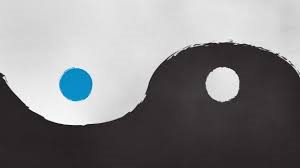How can you tell Bad Cannabis from Good Cannabis? In this day and age of legal, grey and black-market cannabis, how does a consumer know the good from the bad?
And, what do we mean by “good” and “bad”? For the purposes of this post, there are three definitions we’re working with:
- Effect: Good cannabis will provide the effect you want. Pretty much a subjective experience.
- Quality: There are measurable metrics which can determine if the cannabis is “good” or “bad”. These are objective experiences and typically require a testing lab.
- Health: While cannabis is considered a medicine, how you use it will impact your health in either a ‘good’ or ‘bad’ way. Too much of anything is excessive, however, this metric is, again, subjective.
Track and Trace
 In legal markets, ‘track and trace’ systems ensure the cannabis which is being sold at licensed dispensaries is in fact free of heavy metals and minerals and is as ‘pure’ as it can be.
In legal markets, ‘track and trace’ systems ensure the cannabis which is being sold at licensed dispensaries is in fact free of heavy metals and minerals and is as ‘pure’ as it can be.
This does NOT mean the cannabis is “good” in the qualitative sense; I’ve smoked plenty of cannabis from dispensaries which was just “bleh”. Most times, ‘curing’ the cannabis is as important as growing it pesticide free.
If cannabis is not cured correctly, the flavor profile (and the effect) can be diminished.
Trichomes, Terpenes and Flavinoids
These component parts of the cannabis plant are key when looking at ‘good’ and ‘bad’ cannabis. The trichomes produce the resin which provides the THC – so, strains which generate healthy outputs of trichomes are ‘good’ (when you’re measuring THC).
The terpenes are what make up the aroma and taste of cannabis (when you peel an Orange, what you smell and then taste are terpenes). Again, an indicator of ‘good’ cannabis is the presence of terpenes.
Flavinoids are what give the cannabis flower it’s visual characteristics. So, vivid colors and hues are positive indicators.
Indoor versus Outdoor
You can have ‘good” indoor and outdoor and ‘bad’ indoor and outdoor grown cannabis. One thing about growing indoors: at some point, the grower’s grow room development, they will be working with a stable strain and will have “dialed” in the grow room so it’s optimal for the strain they’re growing.
There are significantly more environmental factors to consider when growing outdoors, however, sun-grown cannabis plants often reach spectacular heights and diameters.
Both indoor and outdoor growing can produce ‘good’ cannabis, but, as the saying goes, the bad stuff is being grown somewhere too!
The Ash Test – Butterfly Wings
One way to tell how carefully your cannabis was grown is the “butterfly wing” ash test. When cannabis is grown properly, the last three weeks (or so) of their grow cycle is spent feeding the plants only water. While flushing doesn’t change the inherent structure of the plant, it will provide the plant with a cleanse, as it were.
One way to know how well your plant was cared for is to burn a bowl to ash. You should see what looks like a burned butterfly wing – just a light pile of almost white ash.
If you see dark ash, or, the ash doesn’t burn away cleanly, that is an indicator the cannabis plant wasn’t flushed properly and may contain by-products which are not healthy.
It is unlikely that well-grown and prepared cannabis would do much other than burn to gray or white ash. Conversely, you probably don’t need to be a snob about having ash as white as driven snow. So long as the smoke is smooth and flavorful, it’s probably good bud.
This is one way to see if your stash is good.
Bad Cannabis and Good Cannabis
It comes down to a combination of factors, including: does the cannabis you consume “work” for you?
In my use case, the cannabis which I use to manage chronic pain is a potent indica strain which provides me with a ‘body high’ enabling me to move easier. This is my “good” cannabis.
However, it could be someone else’s ‘bad’ cannabis if they do not enjoy the experience!
How to Learn More
Book a Happy Travelers Tours cannabis adventure and get up-close-and-personal with cannabis plants on our MountainTop Grow!